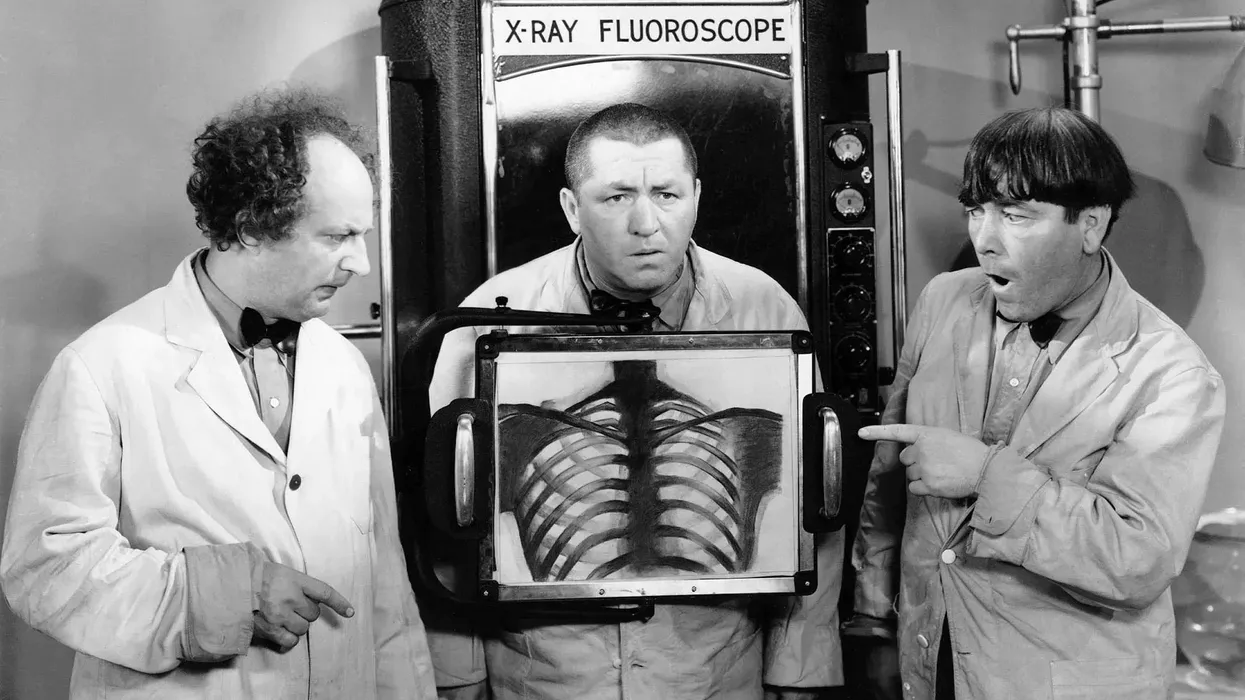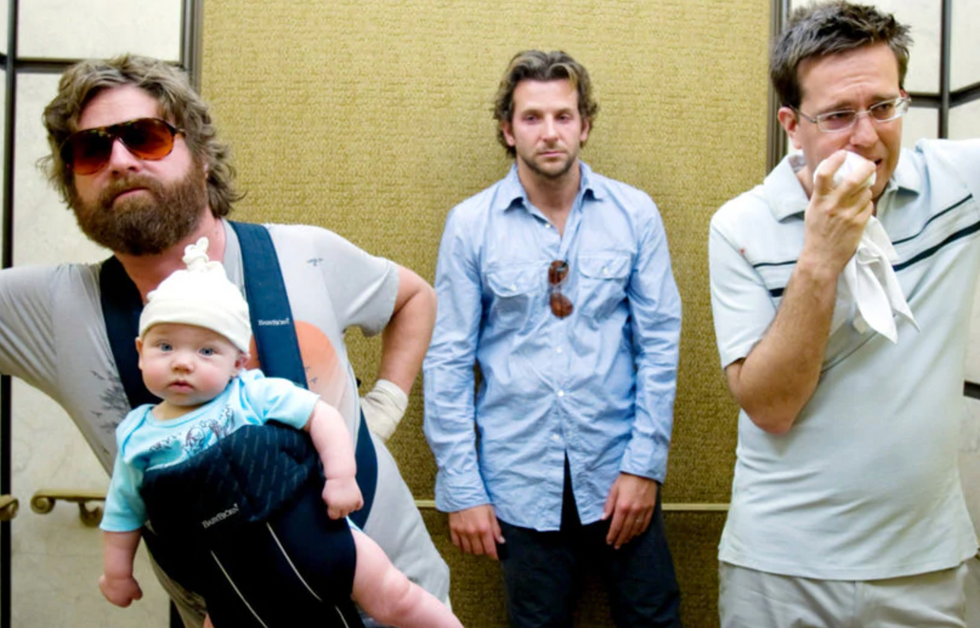What is the "Rule of Three" in Screenwriting?
Unpack this strategy for planting and paying off story events in triplicate.

Dizzy Doctors
There are lots of supposed "rules" in screenwriting that self-proclaimed "gurus" tell you have to be in your scripts.
To be completely honest? I think most of that stuff is total bull. Different strategies work for different people and for different stories. (That's my guru rule.)
But one idea I always back to is called: "The Rule of Three."
In the world of screenwriting, the Rule of Three is rooted in the human psyche's affinity for the number three and how we want things to happen three times. It has helped me crack story problems in indies and blockbusters, so I want to go over it with you now.
Let's dive in.
The Rule of Three Definition

Star Wars
Disney
The Rule of Three in storytelling and screenwriting is a principle suggesting that concepts or ideas presented in threes are inherently more interesting, satisfying, and effective in their narrative impact.
It's grounded in a psychological phenomenon that humans are naturally inclined to recognize and remember information in threes.
This pattern is pervasive in culture, religion, and literature, with examples ranging from the Three Little Pigs, three little bears, and, to get biblical, all the way back to the Holy Trinity.
In screenwriting, this rule leverages our brain's preference for trio-based structures, making stories more engaging and memorable.
Key Aspects of the Rule of Three

Back to the Future
Universal
Look, I know that the whole "human psychology wants this" is a little wonky and weird. I have no idea if our brains crave things in three, but I think in terms of storytelling, it really helps me figure out things that need to happen in each act.
But that's because of three act structure, so so maybe we are more inclined to buy in now after convincing myself.
Anyway, there are a ton of ways to manifest the rule of three in your writing.
- Structure: Often, stories are structured in three distinct parts: the beginning (setup), the middle (confrontation), and the end (resolution). This is widely known as the three-act structure in screenwriting. Each part serves a specific purpose in the overall narrative, providing a clear and satisfying progression of the story.
- Character Development: Characters in a story might go through three key stages of development or face three significant challenges. This helps in creating a more dynamic and rounded character arc. Beyond structure, the Rule of Three influences character development. It often appears in the form of three distinct character traits or three crucial decisions that define a character's journey. This method of character portrayal ensures a balanced and dynamic representation, making characters more relatable and memorable.
- Comedy: In comedy, the Rule of Three is often used in the setup of jokes. The first two instances build tension or expectation, and the third delivers the punchline, often with a twist.
- Symbolism: The use of threes can also be symbolic, reflecting cultural, religious, or mythological significance, which can add depth and resonance to the story.
- Dialogue: In dialogue, the Rule of Three creates rhythm and emphasis. A character might repeat something three times for effect, or a script might present three examples to make a point. In comedy, this rule is fundamental, where a series of three jokes or gags escalates, with the third often serving as the punchline.
Examples of the Rule of Three in Movies and TV

Iron Man
Disney
When I sat down to actually pull examples, I found it to be a little hard because there were so many. And they can manifest in ways ranging from structure to dialogue, character development, and plot points.
So I broke them into sections and tried to be specific.
- Three-Act Structure:
- The core of many films is a three act structure: Setup (Act 1), Confrontation (Act 2), and Resolution (Act 3).
- Example: In The Matrix, Act 1 introduces the world and the main character Neo; Act 2 delves into Neo's training and the war against the machines; Act 3 culminates in Neo's realization of his powers and the confrontation with Agent Smith.
- Character Arcs:
- Characters often undergo three stages of transformation. This can be seen in their beliefs, capabilities, or relationships.
- Example: In Iron Man, Tony Stark evolves from a carefree arms dealer (Stage 1), to a prisoner realizing the consequences of his work (Stage 2), and finally to a superhero resolving to use his technology for good (Stage 3).
- Plot Points:
- Screenplays often present three crucial plot points or challenges that the protagonist must overcome.
- Example: In Jurassic Park, the kids face a series of three major dinosaur-related crises that help them arc—the initial T-Rex attack (1), the raptors in the kitchen (2), and the final T-Rex versus raptors showdown (3).
- Symbolism:
- Themes or symbols can be presented three times throughout a script to reinforce their significance.
- Example: In The Shawshank Redemption, the theme of hope is reinforced through three major symbolic events: Andy playing the opera over the prison speakers, his description of Zihuatanejo to Red, and the final scene of finding the letter under the rock.
- Comedy:
- Comedy often uses the Rule of Three in joke structure, with two straight items followed by a punchline.
- Example: In The Hangover, the repetitive structure of the characters waking up in Vegas to increasingly bizarre findings in their shared room (a tiger in the bathroom, a baby in the closet, etc.), escalating the humor.
- Dialogue:
- Repeating a line or phrase three times can be used for emphasis or to create memorable moments.
- Example: In Dead Poets Society, the phrase "Carpe Diem" is used at three pivotal moments, each time reinforcing the theme of seizing the day.
- Plant and Payoffs:
- A concept introduced early in the script (setup) is often revisited and resolved (payoff) three times.
- Example: In Back to the Future, the DeLorean's need for 1.21 gigawatts of power is a problem presented and solved three times, each in a different time period.
Using The Rule of Three

The Hangover
Warner Bros.The Rule of Three is a reflection of how humans perceive and enjoy stories. Its presence across different elements of a script—from structure to character development, dialogue, and thematic expression—underlines its versatility and effectiveness.
While the Rule of Three is a guiding principle, it's not a strict formula that must be followed rigidly. Like any of the "rules," it should be used if you need to figure something out, but no one is going to throw your idea out if you don't follow it.
Creative deviations can often lead to innovative storytelling. If you can do a lay of this rule, it may help make your story feel fresh as well.
The key is to understand the psychological basis and narrative effectiveness of the rule, and then apply it flexibly to enhance the storytelling.
In a world inundated with content, understanding and applying the Rule of Three gives screenwriters a powerful tool to make their stories stand out.
Let me know what you think in the comments, then do two more times for symbolic reinforcement.
- The Only Screenwriting Rule Worth Following: Plant and Payoff ›
- Watch: Everything You Need to Know About the Most Important Rule in Filmmaking ›
- Is the Rule of Thirds Really All That It's Cracked Up to Be? ›
















